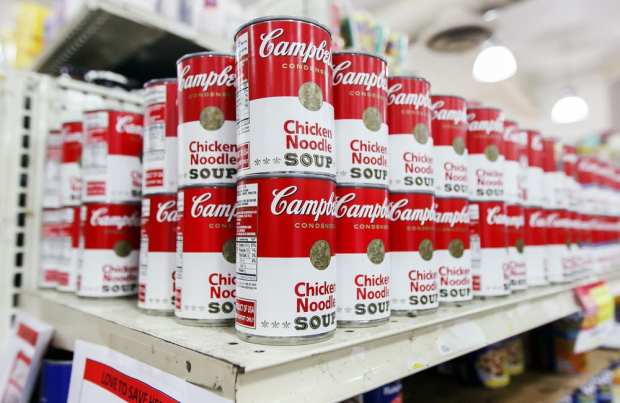When The Going Gets Tough, The Tough Buy (Campbell’s) Soup

When the going gets tough, the tough — buy soup, apparently. And lots of it if recent reports from last weekend are to be believed and Americans are rushing to stores and clearing the shelves of soup and other canned goods. Consumers are apparently hoarding as they prepare to hunker down in preparation for the continued spread of the COVID-19 virus.
And it seems there is reason to believe those reports, and that the phenomenon might be a bit less transient that the empty shelves one tends to see in the run-up to a major weather event, as Campbell Soup has officially announced that it is ordering more ingredients in an attempt to get ahead of increased demand for its soups, sauces and snacks.
Speaking on CNBC, Campbell’s CEO Mark Clouse noted that while the bump-up in purchasing is still too early to be called a trend definitively. However, as of last weekend, it became clear that consumers were not only buying a lot more soup and other readymade and shelf-stable products but that the demand was coming in across all channels.
“We are seeing it picking up rapidly at both traditional retailers and online especially. People who aren’t interested in going out and shopping right now for understandable reasons are increasingly going digital to shop, or using our retail partners’ Click-and-Collect features. But on the whole, we are seeing demand pick up on a pretty broad set of channels, not in one particular area.”
That has left Campbell’s working very closely with its supply chain partners to begin stepping up its orders so that its inventory for the types of items that tend to be big sellers during natural disasters are readily on hand. Soups, snacks and Prego spaghetti sauce tend to be the big sellers. Campbell’s is focused on making sure it can meet the increased demand for those products in the coming weeks and months.
Clouse was, however, cautious to note that the preparations were precautionary and that thus far, Campbell’s has not seen massive spikes due to the virus. Its growth at the end of last year, he noted, was due to increased sales for the season and better penetration among millennial consumers, not the virus’s early days in circulation.
But, the situation is unpredictable and changing day-to-day. As of this week, the virus has killed over 3,000 people worldwide and is now located in 80 nations spread across six continents. As of March 4, the mortality rate from the virus was pushed up from 2 percent to 3.4 percent. As the situation has become more widespread, local health officials in some states have already begun advising consumers to stock up on nonperishable foods, prescription medications and sanitary supplies as a precautionary measure.
But there is a thin line between caution and over-reaction among consumers, and there are emerging concerns that supply chains and store shelves could be hit hard by a sudden rush of customers looking to hoard supplies in advance of a coming crisis, the scale and danger of which is hard to evaluate.
Though data remains limited, early figures from Nielsen indicate that the demand for some consumer products — pretzels and fruit snacks in particular — picked up by 5 percent to 7 percent in January and February. Clouse noted Campbell’s had seen similar sales growth over the last few weeks and that is elevated for this time of year. But how significant the uptick will be in the long term, he noted, remains hard to place.
“There’s no question that we’re seeing some uptick — it’s just hard for me yet to know the level of sustained need,” Clouse said, noting that SpaghettiOs canned pasta and Swanson canned chicken have also seen their popularity among consumer suddenly pick up.
The uptick in consumer interest comes at an interesting time for Campbell’s, a firm which, after 150 years in business, has found itself struggling in recent years to revitalize its canned soup business through more active recruitment of younger consumers with a stronger digital presence, a greater focus on healthful products and an increased focus on incorporating its products in recipes. Those efforts have started paying out for the brand, which reported better than expected quarterly sales and profit on Tuesday, as well as increased market share with millennial and Gen Z consumers.
As it turns out, Clouse told CNBC, there is an appetite for soup among the younger consumer, and whetting it has helped Campbell’s increase its share price by 24 percent in the 24 months that Clouse has been at the helm of the firm trying to effect a turnaround.
But for all the strategic changes Campbell’s has made, and Clouse noted, plan to continue making particularly when it comes to marketing and reach younger consumers, it may turn out that it is the COVID-19 virus that forcefully reminds younger consumers how M’m! M’m! Good! a quick bowl of soup can be when one is worried about their health, particularly if the can it comes in is delivered directly to their doors.
